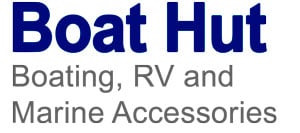Subtotal: $751.87
Life Jacket Rules in NSW
Safety is paramount when enjoying open waters in New South Wales (NSW), Australia. Understanding the life jacket regulations is not just about compliance; it’s about ensuring every trip on the water is as safe as possible. This blog will provide a straightforward guide to the life jacket rules for recreational vessels in NSW without the fluff. You can find more information on on life jackets regulations in NSW by visiting the official govt website here.
Life Jackets on Recreational Vessels: The Basics
Under the Maritime Safety Regulations 2016, it is mandated that most recreational vessels in NSW carry an appropriate size and type of life jacket for each individual on board. These life jackets must be readily accessible and prominently visible to passengers, or a sign must indicate their location.
Understanding the Different Types of Life Jackets Required in NSW
The regulations recognize four main types of life jackets:
- Type 1 lifejacket – Level 150 or Level 100 PFD (Personal Flotation Device).
- Type 2 lifejacket – Known as Level 50 PFD.
- Type 3 lifejacket – Known as Level 50 S PFD.
- Type 1 inflatable lifejacket – Similar to the Type 1 lifejacket, it relies on carbon dioxide for inflation.
Lifejackets Required on Board
The requirements vary depending on the vessel operating in water:
- Open (Ocean) Waters: Type 1 lifejacket must be carried for everyone on board, except for Outrigger Canoes.
- Enclosed Waters: Type 1, 2, or 3 lifejackets must be carried.
- Alpine Waters: Type 1 or 2 lifejackets must be carried.
Mandatory Wearing of Life Jackets
The law specifies situations where life jackets must be worn in NSW waters, summarized as follows:
- Children under 12 years: Must wear life jackets at all times in vessels under 4.8m and in open areas of underway vessels between 4.8m and 8m.
- Vessels under 4.8m: All occupants must wear life jackets on enclosed waters at night or alone and at all times on open and alpine waters.
- During towing activities: Life jackets are always required on all seas.
- Canoes and kayaks: Life jackets are necessary more than 100m from shore on enclosed waters and at all times on open and alpine waters.
- PWC (Personal Water Craft): Life jackets are always a must on enclosed, open, and alpine waters.
Challenging a Fine
If you are fined for non-compliance, you have the option to challenge the penalty by electing to have the matter heard in court. This must be done within 28 days of receiving the infringement notice if the fine has not been paid or within 90 days if the fine has been paid. The maximum court-imposed fine for non-compliance can reach up to $5,500, with the risk of a conviction being recorded.
Conclusion
Adhering to life jacket regulations is critical to ensuring safety on NSW waterways. By understanding the types of life jackets required and the specific situations in which they must be worn, boaters and water safety enthusiasts can enjoy their time on the water with peace of mind. Always remember that the primary goal of these regulations is to protect lives; compliance is not just a legal obligation but a moral one. If you’re looking for regulations in other states, please read our article on Life Jacket regulations for Australia.
 Hansen Effluent 90mm Adaptor (Effluent System Part A)
Hansen Effluent 90mm Adaptor (Effluent System Part A)



